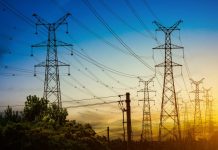ISLAMABAD: Chinese firms have introduced new technologies in the Pakistan’s energy sector, thus helping the country in its endeavour to turn to greener sources of power generation in the long-run, WealthPK reported on Thursday.
The new power generation technologies were introduced in Pakistan after the launch of China-Pakistan Economic Corridor in 2013. During the first phase of the multibillion-dollar project, a number of energy projects have been completed and several others are in the process of development.
Noticeable among the projects are 300MW hydropower plant in Balakot tehsil of Mansehra district of Khyber Pakhtunkhwa, 884MW Suki Kinari hydropower project in Mansehra, 720MW hydropower project in Karot area of the Punjab province and the Neelum-Jhelum hydropower project in Azad Kashmir.
The prominent thing about these projects is that they are being executed using the underground hydropower technology.
Such a technology is mostly used in mountainous areas where on-surface constructions are difficult.
According to WealthPK, a Chinese firm, China Gezhouba Group Corp (CGGC), is executing the 300MW hydropower project in Balakot, using unground hydropower technology.
The new underground hydropower technology was introduced by CGGC in 2018 during the execution of the Neelum-Jhelum hydropower project in Azad Jammu and Kashmir.
CGGC is also executing the Suki Kinari hydropower project under CPEC, involving the same engineering design.
According to sources in the CPEC Authority, Shanghai Electric is building a coal-based 1,320MW power plant in Tharparkar.
Moreover, China Three Gorges Corp (CTGC) is constructing an underground hydropower plant on River Jehlum in Karot area of the Punjab province. The project is expected to complete by April 2022.
These underground power plants are key to increasing domestic power production and reducing reliance on expensive use of furnace oil and diesel for power generation.
Pakistan Bureau of Statistics data reveals that the oil import bill increased 113% to $10.18 billion from $4.77 billion in July-December period of 2021.
According to the Indicative Generation Capacity Expansion Plan (IGCEP), hydropower production is predicted to account for 40% of electricity generation by the year 2040, while renewable energy and local coal generation are expected to account for 16% and 25%.
Imports of coal and RLNG will be reduced from the present levels of 7% and 23% to 5% and 6%, respectively.
As of now, Pakistan has a generation capacity of 37,261MW, which is greater than the demand. Pakistan should also focus on improving the electricity transmission and distribution infrastructure in order to save power from being wasted.
The loss rate of the distribution system is currently 18.3%, and the transmission system 2.4%. This requires technical and governance interventions in order to reduce the losses, which will also result in a reduction of circular debt.
The government should encourage more investments in the renewable energy sector, both on-grid and off-grid, and implement solutions that will increase efficiency while reducing dependence on public resources.
INP





